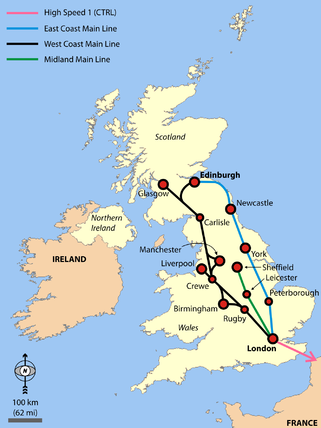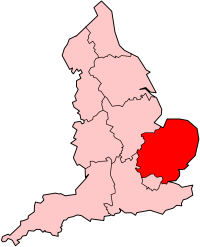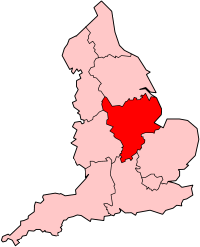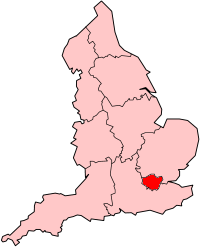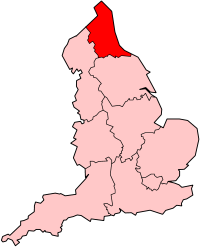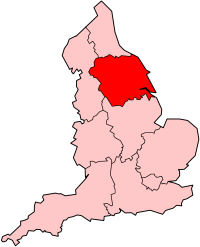East Coast Main Line
| East Coast Main Line | |||
|---|---|---|---|
 The East Coast Main Line viaduct at Durham. |
|||
| Overview | |||
| Type | Commuter rail, InterCity, High-speed, Heavy rail | ||
| System | National Rail | ||
| Status | Operational | ||
| Locale | Greater London, East of England, East Midlands, North East England, Scottish Borders, Central Scotland | ||
| Termini | London King's Cross Edinburgh Waverley |
||
| Stations | 52 | ||
| Operation | |||
| Opened | 1871 (complete line) | ||
| Owner | Network Rail | ||
| Operator(s) | East Coast[1] First Capital Connect First Hull Trains East Midland Trains CrossCountry First TransPennine Express Northern Rail First ScotRail Grand Central DB Schenker FirstGBRf Freightliner Freightliner Heavy Haul Direct Rail Services |
||
| Depot(s) | Hornsey Bounds Green Neville Hill Heaton Haymarket |
||
| Rolling stock | Class 43 HST Class 91 Class 180 Adelante Class 185 Pennine Class 220 Voyager Class 221 Super Voyager Class 222 Meridian Class 313 Class 317 Class 365 Networker |
||
| Technical | |||
| Line length | 393 miles (632 km) | ||
| No. of tracks | Two - Four | ||
| Track gauge | Standard Gauge 1,435 mm (4 ft 8 1⁄2 in) | ||
| Electrification | 25kV 50hz AC OHLE | ||
| Operating speed | 125 mph (200 km/h) maximum | ||
|
|||
| East Coast Main Line | ||||||||||||||||||||||||||||||||||||||||||||||||||||||||||||||||||||||||||||||||||||||||||||||||||||||||||||||||||||||||||||||||||||||||||||||||||||||||||||||||||||||||||||||||||||||||||||||||||||||||||||||||||||||||||||||||||||||||||||||||||||||||||||||||||||||||||||||||||||||||||||||||||||||||||||||||||||||||||||||||||||||||||||||||||||||||||||||||||||||||||||||||||||||||||||||||||||||||||||||||||||||||||||||||||||||||||||||||||||||||||||||||||||||||||||||||||||||||||||||||||||||||||||||||||||||||||||||||||||||||||||||||||||||||||||||||||||||||||||||||
|---|---|---|---|---|---|---|---|---|---|---|---|---|---|---|---|---|---|---|---|---|---|---|---|---|---|---|---|---|---|---|---|---|---|---|---|---|---|---|---|---|---|---|---|---|---|---|---|---|---|---|---|---|---|---|---|---|---|---|---|---|---|---|---|---|---|---|---|---|---|---|---|---|---|---|---|---|---|---|---|---|---|---|---|---|---|---|---|---|---|---|---|---|---|---|---|---|---|---|---|---|---|---|---|---|---|---|---|---|---|---|---|---|---|---|---|---|---|---|---|---|---|---|---|---|---|---|---|---|---|---|---|---|---|---|---|---|---|---|---|---|---|---|---|---|---|---|---|---|---|---|---|---|---|---|---|---|---|---|---|---|---|---|---|---|---|---|---|---|---|---|---|---|---|---|---|---|---|---|---|---|---|---|---|---|---|---|---|---|---|---|---|---|---|---|---|---|---|---|---|---|---|---|---|---|---|---|---|---|---|---|---|---|---|---|---|---|---|---|---|---|---|---|---|---|---|---|---|---|---|---|---|---|---|---|---|---|---|---|---|---|---|---|---|---|---|---|---|---|---|---|---|---|---|---|---|---|---|---|---|---|---|---|---|---|---|---|---|---|---|---|---|---|---|---|---|---|---|---|---|---|---|---|---|---|---|---|---|---|---|---|---|---|---|---|---|---|---|---|---|---|---|---|---|---|---|---|---|---|---|---|---|---|---|---|---|---|---|---|---|---|---|---|---|---|---|---|---|---|---|---|---|---|---|---|---|---|---|---|---|---|---|---|---|---|---|---|---|---|---|---|---|---|---|---|---|---|---|---|---|---|---|---|---|---|---|---|---|---|---|---|---|---|---|---|---|---|---|---|---|---|---|---|---|---|---|---|---|---|---|---|---|---|---|---|---|---|---|---|---|---|---|---|---|---|---|---|---|---|---|---|---|---|---|---|---|---|---|---|---|---|---|---|---|---|---|---|---|---|---|---|---|---|---|---|---|---|---|---|---|---|---|---|---|---|---|---|---|---|---|---|---|---|---|---|---|---|---|---|---|---|---|---|---|---|---|---|---|---|---|---|---|---|---|---|---|---|---|---|---|---|---|---|---|---|---|---|---|---|---|---|---|---|---|---|---|---|---|---|---|---|---|---|---|---|---|---|---|---|---|---|---|---|---|---|---|---|---|---|---|---|---|---|---|---|---|---|---|---|---|---|---|---|---|---|---|---|---|---|---|---|---|---|---|---|---|---|---|---|---|---|---|---|---|---|---|---|---|---|---|---|
|
||||||||||||||||||||||||||||||||||||||||||||||||||||||||||||||||||||||||||||||||||||||||||||||||||||||||||||||||||||||||||||||||||||||||||||||||||||||||||||||||||||||||||||||||||||||||||||||||||||||||||||||||||||||||||||||||||||||||||||||||||||||||||||||||||||||||||||||||||||||||||||||||||||||||||||||||||||||||||||||||||||||||||||||||||||||||||||||||||||||||||||||||||||||||||||||||||||||||||||||||||||||||||||||||||||||||||||||||||||||||||||||||||||||||||||||||||||||||||||||||||||||||||||||||||||||||||||||||||||||||||||||||||||||||||||||||||||||||||||||||
The East Coast Main Line (ECML) is a 393-mile (632 km) long[2] electrified high-speed railway[3] link between London, Peterborough, Doncaster, Wakefield, Leeds, York, Darlington, Newcastle and Edinburgh. It is classed as a High Speed railway line because it meets the lowest speed a High Speed railway can be of 125mph (200km/h)
The route forms a key artery on the eastern side of Great Britain and is broadly paralleled by the A1 trunk road. It links London, the South East and East Anglia with Yorkshire, the North East Regions and Scotland. It also carries key commuter flows for the north side of London. It is therefore important to the economic health of a number of areas of the country. It also handles cross-country, commuter and local passenger services, and carries heavy tonnages of freight traffic. The route has ELRs ECM1 - ECM9.
Contents |
Route definition and description
The Network Rail definition of the ECML includes five separate lines:
- The main line between London King's Cross and Edinburgh Waverley stations, via Stevenage, Peterborough, Grantham, Newark, Retford, Doncaster, York, Darlington, Durham, Newcastle, Berwick-upon-Tweed and Dunbar;
- The Doncaster branch of the Wakefield Line, between Doncaster and Leeds;
- The North Berwick branch from Drem to North Berwick
- The Northern City Line from Finsbury Park to Moorgate
- The Hertford Loop from Alexandra Palace to Stevenage
In addition to the formal Network Rail definition, the ECML is sometimes regarded as extending beyond Edinburgh Waverley to Aberdeen, running mostly right on the east coast via Kirkcaldy, Dundee and Arbroath. North of Edinburgh it includes the red cantilever Forth Bridge, and at Dundee the curved Tay Bridge, both crossing wide river estuaries.
The Edinburgh Waverley to Glasgow Central via Carstairs and Motherwell line is officially part of the West Coast Main Line (WCML) route, but is often considered part of the ECML because several East Coast services from King's Cross to Glasgow Central use this section on a daily basis
History
The line was built by three railway companies, each serving their own area but with the intention of linking up to form the through route that became the East Coast Main Line. From north to south they were
- the North British Railway, from Edinburgh to Berwick-on-Tweed, completed in 1846,
- the North Eastern Railway from Berwick-on-Tweed to Shaftholme; the North Eastern Railway was substantially complete in 1871 when the company combined parts of several local railways and built a section to form a direct through route, and
- the Great Northern Railway from Shaftholme to Kings Cross, completed in 1850.
The boundary between the NER and the GNR was an end-on junction, famously described as in "a ploughed field" at Shaftholme, some way north of Doncaster.
Realising that through journeys were an important part of their business, the companies established special rolling stock in 1860 on a collaborative basis; it was called the "East Coast Joint Stock".
In 1923 the three companies were grouped into the London and North Eastern Railway (LNER).
Numerous alterations to short sections of the original route have taken place, the most notable being the opening of the King Edward VII Bridge in Newcastle upon Tyne in 1906 and the Selby diversion, built to by-pass anticipated mining subsidence from the Selby coalfield and a bottleneck at Selby station. The Selby diversion was opened in 1983 and diverged from the original ECML at Temple Hirst, north of Doncaster, and joined the Leeds to York line at Colton Junction.
The ECML has been the backdrop for a number of famous rail journeys and locomotives. The line was worked for many years by Pacific locomotives designed by Gresley, including the famous steam locomotives "Flying Scotsman" and "Mallard". Mallard achieved a world record speed for a steam locomotive, at 126 miles per hour (203 km/h) and this record was never beaten. It made the run on the Grantham-to-Peterborough section, on the descent of Stoke Bank.
Steam locomotives were replaced by Diesel electrics in the early 1960s, when the purpose-built Deltic locomotive was developed by English Electric. The prototype was successful and a fleet of 22 locomotives was built, to handle all the important express traffic. The class 55 were powered by two engines originally developed for fast torpedo boat purposes, and the configuration of the engines led to the Deltic name. Their characteristic throaty exhaust roar and chubby body outline made them unmistakable in service. The class 55 was for a time the most powerful diesel locomotive in service in Britain, at 3,300 hp (2,500 kW).
It was just after the Deltics were introduced that the first sections of the East Coast Main Line were upgraded to officially allow 100 miles per hour (160 km/h) running. The first length to be cleared for the new higher speed was a 17 miles (27 km) stretch between Peterborough and Grantham on the 15 June 1965, the second was 12 miles (19 km) between Grantham and Newark.[4]
As the demand for higher speed intensified, the Deltics were eventually superseded by the High Speed Train (HST), introduced between 1976 and 1981.
A prototype of the HST, the British Rail Class 43 (HST) achieved 143 mph (230 km/h) on the line in 1973.[5] Current UK legislation requires in-cab signalling for speeds of over 125 mph which is the primary reason preventing the InterCity 225 train-sets from operating at their design speed of 140 mph (225 km/h) in normal service.
A secondary but no less important factor was that the signalling technology of the time was insufficiently advanced to allow detection of two broken rails on the line on which the train was operating[6].
Before the present in-cab regulations came in, British Rail experimented with 140 mph running by introducing a fifth, flashing green signalling aspect on track between New England North and Stoke Tunnel. The fifth aspect is not observable in normal service and appears when the next signal is showing a green (or another flashing green) aspect and the signal section is clear which ensures that there is sufficient braking distance to bring a train to a stand from 140 mph.[5] Locomotives have operated on the ECML at speeds of up to 161.7 mph (260.2 km/h) in test runs.[7]
The ECML was electrified in the late 1980s using state money. The electrification work began in 1985 and the initial section between King's Cross and Leeds went into operational trials in 1988. The full electrification was completed in late 1990, and the current InterCity 225 rolling stock was introduced.
Infrastructure
The line is mainly four tracks from London to Stoke Tunnel, south of Grantham, except for two twin-track sections; the first of these is near Welwyn North Station as it crosses the Digswell Viaduct and passes through two tunnels, the second is between Huntingdon and Peterborough near 'Stilton Fen'. North of Grantham the route is twin track except for four-track sections around Doncaster, between Colton Junction (which is south of York) and Northallerton, and another at Newcastle.[8]
The main route is electrified along the full route and only the Leeds and Wakefield branch between Leeds and York (Neville Hill Depot to Colton Junction) is non-electrified.[8]
With most the of the line rated for 125 mph (200 km/h) operation, the ECML was the fastest main line in the UK until the opening of High Speed One. These relatively high speeds are possible because much of the ECML travels on fairly straight track on the flatter, eastern regions of England, through Lincolnshire and Cambridgeshire, though there are significant speed restrictions (due to curvature) particularly North of Darlington and between Doncaster and Leeds. By contrast, the West Coast Main Line has to traverse the Trent Valley and the mountains of Cumbria, leading to many more curves and a lower general speed limit of 110 mph (180 km/h). Speeds on the WCML have been increased in recent years with the introduction of tilting Pendolino trains and now match the 125 mph speeds available on the ECML.
Rolling stock
Most passenger services use the InterCity 225 rolling stock. Some diesels still operate on line, including:
- CrossCountry's Class 220 Voyagers and Class 221 Super Voyagers
- First Hull Trains Class 180 Adelantes (Kings Cross–Hull)
- East Coast HST sets work some services to Edinburgh, and services north of Edinburgh towards Inverness and Aberdeen, as well as daily services to Hull and Skipton.
- East Midlands Trains operate a limited service of HSTs over a portion of the route between Doncaster and Leeds and run a Summer Saturday service with Class 222 Meridians from Doncaster and Scarborough to London St Pancras, and back.
- Grand Central's HSTs (Kings Cross–Sunderland)
Operators
The line's current principal operator is East Coast, whose services include regular trains between King’s Cross, the East Midlands, Yorkshire, the North East of England and Scotland. East Coast is subsidiary of Directly Operated Railways—a holding company owned by the Department for Transport—and took over from National Express East Coast on 14 November 2009.[1] Other operators of passenger trains on the line are:
- First Capital Connect: commuter services between King's Cross, Peterborough, Cambridge and King's Lynn and between Moorgate and Stevenage via either Welwyn Garden City or the Hertford Loop.
- First Hull Trains: between Kings Cross and Hull.
- East Midlands Trains: local services between Grantham and Peterborough, part of the service that runs between Liverpool Lime Street and Norwich, as well as London services between Doncaster and York/Scarborough, extensions of services running to/from Sheffield, Leicester and London St Pancras.
- CrossCountry: cross-country services north of Sheffield are routed via either Leeds or Doncaster. Leeds trains use the ECML between Wakefield Westgate and Leeds and then again north of York. Doncaster trains use the ECML north of Doncaster. Services run to and beyond Edinburgh. Occasional services run from Doncaster to Leeds before rejoining the ECML at York.
- First TransPennine Express: between York and Newcastle and between York and Northallerton before they divert off the ECML to Middlesbrough via Yarm.
- Northern Rail: suburban services from Doncaster to Leeds and Chathill to Newcastle via Morpeth railway station and infrequent services between Newcastle and Darlington that continue to Middlesbrough and Saltburn. Services between Selby and York also use the line from Hambleton Junction to York.
- First ScotRail: services between Edinburgh and North Berwick. The overnight Caledonian Sleeper occasionally uses the ECML when engineering works prevent it from using its normal train path on the WCML.
- Grand Central: intercity from Kings Cross to Sunderland, branching off the main line at Northallerton and Bradford, branching off at Doncaster.
Eurostar previously held the rights to run five trains a day on the line for services from continental Europe to cities north of London, as part of the Regional Eurostar plan, although such services have never been run.[9]
DB Schenker, FirstGBRf, Freightliner, Freightliner Heavy Haul and Direct Rail Services operate freight services.
Development
Capacity problems
The ECML is one of the busiest lines on the British rail network and there is currently insufficient capacity on parts of the line to satisfy all the requirements of both passenger and freight operators.
There are bottlenecks at the following locations:
- The section of twin track at Welwyn North (using the Digswell Viaduct and the Welwyn tunnels) creates[10]
- At Hitchin where many trains from London using the Hitchin-Cambridge Line must cross three other tracks at grade using a flat junction.[10]
- Just north of Newark station at a flat crossing with the Nottingham-Lincoln line.[11]
- Doncaster station has limited facilities for terminating branch trains on the up side of the station.
- South of Newcastle, leading to proposals to reopen the Leamside line to passenger and freight traffic.[12]
- Between Ickleford and Letchworth where until the mid 1990s the Icknield Way crossed the line on a flat crossing with no barriers or gates. Since then the flat crossing has been replaced by a bridge.
Rail services are vulnerable during high winds and there have been several de-wirements over the years due to the unusually wide spacing between the supporting masts of the overhead lines. This wide spacing was a result of extreme pressure from the Department for Transport (as proxy for the taxpayer) to reduce avoidable costs when the line was originally electrified between 1985 and 1990.[13]
Recent developments
The Allington Chord was constructed near Grantham in 2006, allowing services between Nottingham and Skegness to pass under the line, rather than crossing it at a flat junction. This provided sufficient extra capacity for National Express East Coast to run 12 additional services between Leeds and London each day.[14][15]
Proposed developments
Over the years successive infrastructure managers have developed schemes for route improvements.[8]
These include the following:
- Quadrupling the Welwyn North section, involving probable double-decking of the viaduct and duplication of the two tunnels[16]
- Full reversible signalling over the Stilton Fen section
- Power supply upgrades along the route, including some OLE support improvements and rewiring
- Power supply enhancement on the diversionary Hertford Loop route
- Provision of an extra platform at Kings Cross (the so-called "platform Y")[17]
- Provision of a grade-separated junction at Hitchin North enabling down Cambridge trains to cross the main line[17]
- Provision of a new Up Bay platform at Doncaster
- Enhanced passenger access to the platforms at Peterborough and Stevenage
- Increasing maximum speeds on the fast lines to between 125 mph and 140 mph in conjunction with the introduction of the Intercity Express Programme
- Replacement of the Newark Flat Crossing with a flyover[18]
- Major remodelling of Peterborough Station[17]
- A fourth track at Holgate Junction, south of York, by January 2012[19][17]
- A new flyover at Shaftholme Junction in South Yorkshire to allow freight trains from Immingham to pass over the line on their way to Eggborough and Drax power stations, due for completion by the end of 2013[19][17]
- Reopening of freight diversionary routes
Accidents
The ECML has been witness to a number of incidents resulting in death and serious injury:
| Title | Date | Killed | Injured | Note |
|---|---|---|---|---|
| Hatfield rail crash (1870) | 26 December 1870 | 8 | 3 | Wheel disintegrated causing derailment killing six passengers and two bystanders |
| Abbots Ripton rail disaster | 21 January 1876 | 13 | 59 | Flying Scotsman crashed during a blizzard. |
| Morpeth rail crash (1877) | 25 March 1877 | 5 | 17 | Derailment caused by faulty track |
| Grantham rail accident | 19 August 1906 | 14 | 17 | Runaway or overspeed on curve - no definite cause established |
| Welwyn Garden City rail crash | 15 June 1935 | 14 | 29 | 2 trains collided due to a signaller's error |
| King's Cross railway accident | 4 February 1945 | 2 | 26 | Train slipped on gradient and slid back into station |
| Potters Bar rail crash | 10 February 1946 | 2 | 17 | Local train hit buffers fouling main line with wreckage hit by two further trains |
| Goswick rail crash | 26 October 1947 | 28 | 65 | Edinburgh-London Flying Scotsman failed to slow down for a diversion and derailed. Signal passed at danger |
| Doncaster rail crash | 16 March 1951 | 14 | 12 | train derailed south the station and struck a bridge pier |
| Goswick Goods train derailment | 28 October 1953 | 0 | 1 | 'Glasgow to Colchester' Goods train was derailed at Goswick.[20][21] |
| Connington South rail crash | 5 March 1967 | 5 | 18 | Express train was derailed |
| Thirsk rail crash | 31 July 1967 | 7 | 45 | Cement train derailed and hit by North bound express hauled by prototype locomotive DP2 |
| Morpeth rail crash (1969) | 7 May 1969 | 6 | 46 | Excessive speed on curve |
| Penmanshiel Tunnel collapse | 17 March 1979 | 2 | 2 workers killed when the tunnel collapsed during engineering works | |
| Morpeth rail crash (1984) | 24 June 1984 | 35 | Excessive speed on curve | |
| Newcastle Central railway station collision | 30 November 1989 | 15 | Two InterCity expresses collided[22] | |
| Morpeth rail crash (1992) | 13 November 1992 | 1 | Collision between two freight trains | |
| Morpeth rail crash (1994) | 27 June 1994 | 1 | Excessive speed led to the locomotive and the majority of carriages overturning | |
| Hatfield rail crash | 17 October 2000 | 4 | 70 | InterCity 225 derailed. The accident highlighted poor management at Railtrack and led to its partial re-nationalisation. |
| Selby rail crash | 28 February 2001 | 10 | 82 | A Land Rover Defender swerved down an embankment off the M62 motorway into the path of a southbound GNER Intercity 225 |
| Potters Bar rail crash (2002) | 10 May 2002 | 7 | 70 | Loose points on the line |
| Copmanthorpe rail crash | 25 September 2006 | 1 | A car crashed through a fence onto the line |
Popular culture
The cuttings and tunnel entrances just north of King's Cross make a memorable smoky appearance in the 1955 Ealing comedy film The Ladykillers. Also during the 1950s, the line featured in the 1954 documentary short Elizabethan Express. Later, the 1971 British gangster film Get Carter features a journey from London Kings Cross to Newcastle in the opening credits.
References
- ↑ 1.0 1.1 "East Coast rail change confirmed". BBC News Online. 2009-11-05. http://news.bbc.co.uk/1/hi/england/8343769.stm. Retrieved 2009-11-05.
- ↑ East Coast Main Line Rail Route Upgrading, United Kingdom
- ↑ "East Coast Main Line" (PDF). Route Utilisation Strategy. Network Rail. February 2008. p. 5. http://www.networkrail.co.uk/browse%20documents/rus%20documents/route%20utilisation%20strategies/east%20coast%20main%20line/east%20coast%20main%20line%20rus.pdf. Retrieved 14 May 2008. "The ECML RUS encompasses all long distance high speed and London commuter services into King’s Cross..."
- ↑ Railway Magazine. November 1965. p. 858.
- ↑ 5.0 5.1 Barnett, Roger (June 1992) (PDF). British Rail's InterCity 125 and 225. UCTC Working Paper No. 114. University of California Transportation Center; University of California, Berkeley. p. 32. http://www.uctc.net/papers/114.pdf. Retrieved 2008-05-27.
- ↑ Heath, Don (August 1994). Electrification of British Rail's East Coast Main Line. Paper No. 105. Proceedings of the Institute of Civil Engineers (Transportation). p. 232.
- ↑ Keating, Oliver. "The Inter-city 225". High Speed Rail. http://www.o-keating.com/hsr/ic225.htm. Retrieved 2008-05-29.
- ↑ 8.0 8.1 8.2 "Network Rail Route Business Plan" (PDF). Network Rail. 2008. http://www.networkrail.co.uk/browse%20documents/BusinessPlan2007/PDF/Route%208%20ECML.pdf.
- ↑ Millward, David (2006-04-10). "'Phantom trains' haunt drive to improve East Coast line". London: The Daily Telegraph. http://www.telegraph.co.uk/news/uknews/1515303/%27Phantom-trains%27-haunt-drive-to-improve-East-Coast-line.html. Retrieved 2008-06-17.
- ↑ 10.0 10.1 "Misery line cheers up". BBC Track Record. 1999-11. http://news.bbc.co.uk/hi/english/static/special_report/1999/11/99/track_record/regions/east.stm. Retrieved 2009-07-28.
- ↑ "ECML Route Utilisation Strategy: Railfuture Response" (PDF). The Railway Development Society Ltd.. 2007-09-13. http://www.networkrail.co.uk/browse%20documents/rus%20documents/route%20utilisation%20strategies/east%20coast%20main%20line/consultation%20responses/r/railfuture.pdf. Retrieved 2009-07-28.
- ↑ "ECML Route Utilisation Strategy" (PDF). Network Rail. pp. 66, 134. http://www.networkrail.co.uk/browse%20documents/rus%20documents/route%20utilisation%20strategies/east%20coast%20main%20line/east%20coast%20main%20line%20rus.pdf. Retrieved 2009-07-29.
- ↑ "The Wrong Line". Christian Wolmar. http://www.christianwolmar.co.uk/books/wrong_line.shtml.
- ↑ "New services are just the ticket". BBC News Online. 2005-10-13. http://news.bbc.co.uk/1/hi/england/west_yorkshire/4337682.stm. Retrieved 2007-12-17.
- ↑ "Trains get 6,000 more seats a day". BBC News Online. 2007-05-21. http://news.bbc.co.uk/1/hi/england/west_yorkshire/6676399.stm. Retrieved 2007-12-17.
- ↑ Friends of the Earth proposal
- ↑ 17.0 17.1 17.2 17.3 17.4 Pigott, Nick, ed (March 2010). "Flyovers to go ahead at Hitchin, Ipswich, Shaftholme". The Railway Magazine (London: IPC Media) 156 (1307): 9. ISSN 0033-8923.
- ↑ "East Midlands Route Utilisation Strategy Draft for Consultation" (PDF). Network Rail. 2009. http://www.networkrail.co.uk/browse%20documents/rus%20documents/route%20utilisation%20strategies/east%20midlands/east%20midlands%20rus%20draft%20for%20consultation.pdf.
- ↑ 19.0 19.1 Broadbent, Steve (2010-02-10). "Moving Yorkshire Forward". Rail (637).
- ↑ Northumberland Railways - Goswick station
- ↑ Railways Archive - Ministry report.
- ↑ "Chronology of rail crashes". BBC News. 10 May 2002. http://news.bbc.co.uk/1/hi/uk/465475.stm. Retrieved 2009-12-28.
|
|||||
|
|||||||||||||
|
||||||||||
|
|||||||||||||||||
|
||||||||||
|
||||||||||
|
||||||||||||||||||||||||||
|
|||||||||||||||||||||||||||||||||||||||||||||
